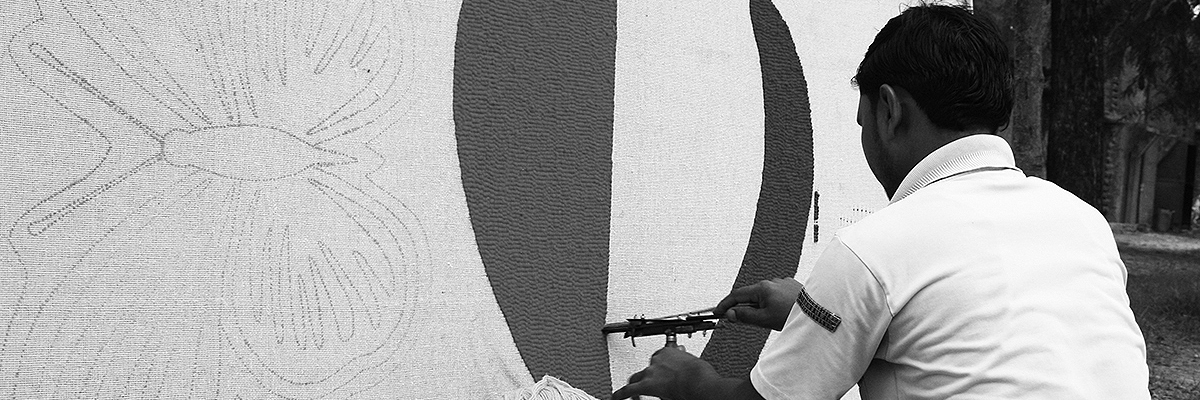Need Help?
+91-120 2328055, +91 9811058105About Us
Who We Are
Established
in 1989, we are a leading manufacturer and exporter of premium quality hand-knotted
and handwoven carpets. Our founder Mool Raj Kishore, who began his career in
the Indian army, took on the task of expanding the family business. He began by
sourcing and then producing jute wall hangings in Varanasi. We then gradually
moved into the manufacturing of exclusive and customised hand-knotted carpets
and rugs.
We have spent the past three decades focusing on
creating and crafting timeless masterpieces rooted in India’s traditional
weaving techniques. Our hand-knotted carpets and rugs are synonymous with the
finest quality, in terms of both material and technique. These premium
offerings have been exported to several countries around the world.
Today, apart from producing the finest hand-crafted carpets and rugs, we have expanded our range to Mool Home products that include designer mats and floor runners. Our aim is to produce exclusive hand-crafted products that add warmth and elegance to your home.
Our Team
Our company is essentially a family business founded
by Mool Raj Kishore. Today, the company is managed and owned by members of the
same lineage, as they have stepped into roles that fit their area of expertise.
As a company, we take pride in
designing mats and rugs that are unique and aesthetically appealing . Our Head
of Design, Priyanka Vaid, seamlessly merges science and art to produce authentic,
distinctive designs. We have creative collaborations with several well-known
international designers to create chic and exclusive designer mats. We also work
with designers from leading design institutes, such as National Institute of
Design( NID) and National Institute of Fashion Technology(NIFT), incorporating the
latest trends and unique motifs in our mat designs.
Our weavers and artisans, the backbone of our company, bring a unique artistry to our products. Many of them have been with us since our inception and they use traditional weaving techniques that have been passed down through generations.
Our Legacy
Design and
Craftsmanship
Our company focuses on
creating timeless, hand-crafted masterpieces by bringing together traditional
weaving techniques and contemporary art and design.
The mats and floor runners we
offer use either the handwoven technique or the hand-tufted technique. The
handwoven technique is where the yarn is woven on a loom into colourful
patterns. The hand-tufted technique is where a hand-operated tool with wool is
used to create a pattern on fabric. These intricate weaving techniques ensure exclusivity
and elegance.
Another unique feature with
Mool Home mats and rugs is that we use a blend of New Zealand wool. New Zealand
wool is considered the world’s most superior quality wool and by using the
finest raw materials, we guarantee premium mats and floor runners.
Artisans
Our dedicated team of artisans
form the backbone of our company. Traditional weaving techniques give them a
source of livelihood while also preserving an art passed down through the
generations. Hand-knotted carpet weaving is extremely labour intensive
and requires immense skill and patience.

“My family has been weaving mats for generations. I am happy I am able to preserve this tradition while earning my livelihood. It makes me happy to create mats and rugs in different patterns and colours.”
Our Impact
We strongly believe in the power of the people and
planet. Sustainability is an important focus area for us.
Empowering our workforce is at the very core of our
company policy as our artisanal community provides us with a strong foundation.
We provide safe working environments and fair wages to ensure a sustainable
livelihood. We employ several local weavers and artisans in Varanasi, many of
them who have worked with us since we began. This also helps us protect and
preserve traditional weaving techniques.
Reducing our environmental impact
on the planet is very important to our company.
We have adopted several eco-friendly processes and practices such as:
- Sourcing sustainable materials
- Low-impact dyes
- Effective energy-saving measures
- High-quality, durable products that reduce the need to replace
